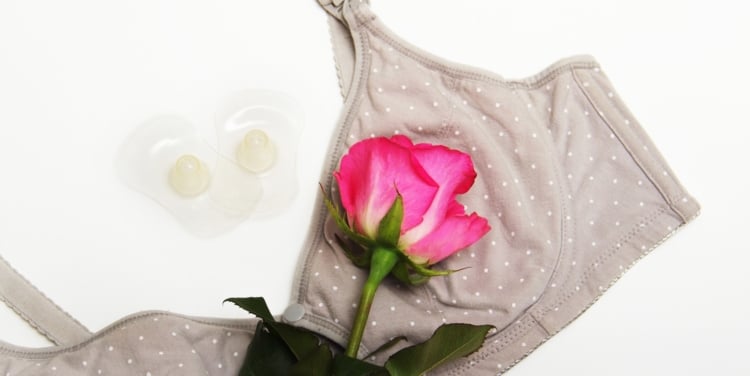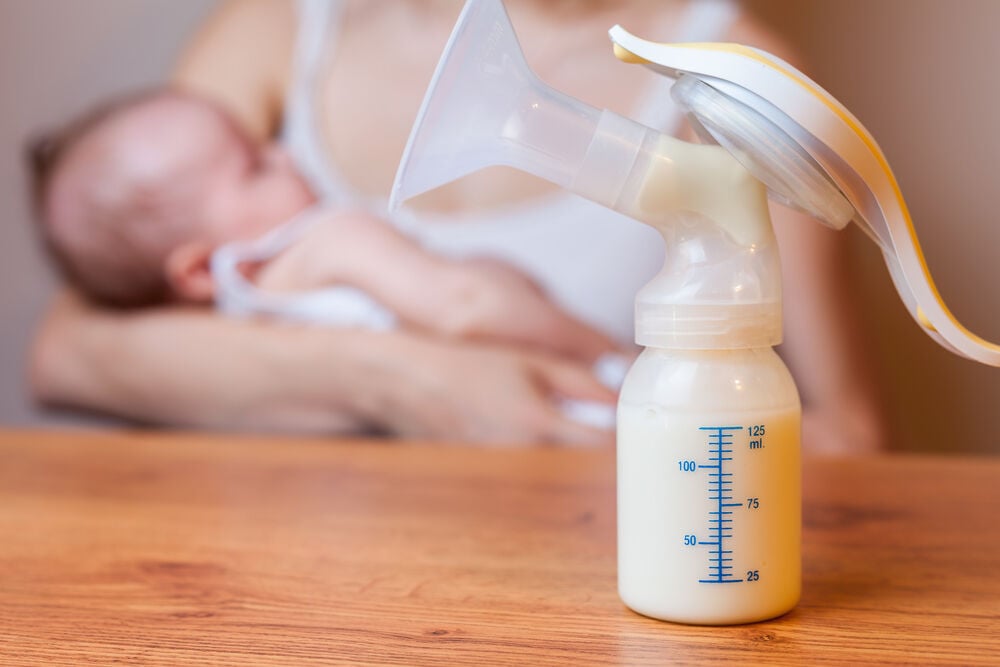Cracked nipples are an uncomfortable condition often experienced by new mothers when learning how to breastfeed. Let’s look at this condition in detail, its causes, and how to heal cracked nipples.
-
Tracking cycle
-
Getting pregnant
-
Pregnancy
-
Help Center
-
Flo for Partners
-
Anonymous Mode
-
Flo app reviews
-
Flo Premium New
-
Secret Chats New
-
Symptom Checker New
-
Your cycle
-
Health 360°
-
Getting pregnant
-
Pregnancy
-
Being a mom
-
LGBTQ+
-
Quizzes
-
Ovulation calculator
-
hCG calculator
-
Pregnancy test calculator
-
Menstrual cycle calculator
-
Period calculator
-
Implantation calculator
-
Pregnancy weeks to months calculator
-
Pregnancy due date calculator
-
IVF and FET due date calculator
-
Due date calculator by ultrasound
-
Medical Affairs
-
Science & Research
-
Pass It On Project New
-
Privacy Portal
-
Press Center
-
Flo Accuracy
-
Careers
-
Contact Us
Cracked Nipples: 4 Proven Ways to Heal

Every piece of content at Flo Health adheres to the highest editorial standards for language, style, and medical accuracy. To learn what we do to deliver the best health and lifestyle insights to you, check out our content review principles.
What causes cracked nipples?
Although having cracked nipples is usually associated with breastfeeding, other things can cause the condition. Read on to find out about possible reasons why it may happen.
Cracked nipples: breastfeeding
Cracked nipples are a common postpartum problem in new mothers. While they are often a result of breastfeeding, nursing by itself is not a painful process with the correct technique. Below are some common reasons why it’s possible to experience cracked nipples while breastfeeding:
- Improper latching: Improper latching is one of the key causes of cracked nipples. When perfectly latched, the nipple is in contact with the back of the baby’s mouth, an area called the soft palate. This area is soft and doesn’t irritate the nipple. However, with improper latching, the nipple rubs against the hard palate, causing friction and irritation.
- Thrush: Newborns often experience thrush, a fungal infection of the mouth, soon after birth. This can be passed from the baby to the mother while breastfeeding, causing nipple pain and irritation.
- Nipple confusion: If you’re breastfeeding as well as bottle feeding, it may lead to nipple confusion in the baby. The technique to draw milk in both methods is different, with one focused on the tongue (bottle) and the other involving the mouth (breast). The baby may get confused and use the incorrect technique while latching, causing cracked nipples.
- Incorrect breast pump use: Cracked nipples can also be caused by not using a breast pump correctly. If the suction level is too high, the pressure may damage the nipple. Use a breast shield that is large enough. It’s a good idea to talk to a professional lactation consultant to find the right pump for your breast size and shape.

Cracked nipples: not breastfeeding
It’s possible to get cracked nipples even if you’re not breastfeeding. Find out more about the other possible reasons why it can happen:
- Nipple eczema: This condition causes itchy, scaly, irritated skin around the areola. It can be caused by irritation from certain fabrics, detergent, soap, or lotion. Nipple eczema usually heals once you find and eliminate the source of irritation.
- Local irritation or trauma: Cracked nipples can also be caused by vigorous rubbing, such as from wearing an ill-fitting sports bra. An injury or fresh nipple piercing that hasn’t healed yet can also cause irritation.
- Bacterial or fungal infections: Certain underlying bacterial and fungal infections such as staph or yeast infections can also cause sore, painful nipples.
- Paget’s disease: This is a type of breast cancer that affects the skin around the nipple and can cause itchy, cracked, and flattened nipples, along with yellowish or bloody discharge.
Take a quiz
Find out what you can do with our Health Assistant
How to heal cracked nipples
Some cases of cracked nipples can be treated with natural remedies. However, it’s a good idea to talk to your health care provider if the pain persists and the nipples are itchy and oozing discharge. This may be a sign of a fungal or bacterial breast infection and require medical help.
Use breast milk to heal
One study found that breastfeeding mothers who rubbed their own breast milk on cracked nipples experienced much faster healing than using a lanolin ointment. Apply a few drops of fresh breast milk over the nipples and allow it to air dry. Don’t try this remedy in case of a thrush infection, though, as the fungus thrives on breast milk.
Let the baby self-latch
If nursing causes pain, it might be because of improper latching. Letting the baby self-attach may be surprisingly helpful. Babies are born with the reflexes needed to attach naturally. Let the baby adjust their chin, neck, and head in a way that feels comfortable for them. Once properly latched, breastfeeding shouldn’t be painful and won’t cause irritated nipples.
Try different feeding positions
To prevent further nipple irritation, try different feeding positions to find one that works for you. Nipples come in all sizes and shapes, and the perfect feeding position might be different for you. A lactation consultant may be able to assist you in the process.
Expose the nipples to the air
Exposing nipples to the air for as long as possible may also be able to speed up the healing process. Airing out the nipples when not breastfeeding will give them time to heal. It also prevents anything from rubbing against them, causing further irritation.
Remedies to avoid
Some people often unknowingly suggest “solutions” that might, in fact, make things worse. Make sure you avoid these methods, as they can cause further damage to cracked nipples.
- Wet tea bags: While placing wet tea bags on the nipples might seem like a soothing technique, it can further aggravate cracked nipples. Tea has an astringent effect and can dry out skin even more. Stick to warm water to soothe the affected area.
- Ointments that are not 100% lanolin or not ingestible: Creams that aren’t 100% lanolin can block off the air supply to the nipples. This can delay the healing process. Avoid using nipple creams that are marked non-ingestible, as these can harm the baby if ingested during breastfeeding.
Also, avoid using soap, products with alcohol, or lotions because these products can dry the skin and make cracked nipples worse.
Having cracked nipples is a common condition while breastfeeding, but it can also happen to just about anyone. Cracked nipples can be dry, red, and sore to the touch. Some simple treatments can help you recover from this common postpartum issue. If the nipples are itchy or oozing discharge, it might be a sign of an infection. Make sure to talk to your health care provider for treatment and to rule out anything serious.


Hey, I'm Anique
I started using Flo app to track my period and ovulation because we wanted to have a baby.


The Flo app helped me learn about my body and spot ovulation signs during our conception journey.


I vividly
remember the day
that we switched
Flo into
Pregnancy Mode — it was
such a special
moment.
Real stories, real results
Learn how the Flo app became an amazing cheerleader for us on our conception journey.
References
Dennis, Cindy-Lee, et al. “Interventions for Treating Painful Nipples among Breastfeeding Women.” The Cochrane Database of Systematic Reviews, U.S. National Library of Medicine, 15 Dec. 2014, pubmed.ncbi.nlm.nih.gov/25506813/.
Jackson , Kimberley T, and Cindy-Lee Dennis. “Lanolin for the Treatment of Nipple Pain in Breastfeeding Women: a Randomized Controlled Trial.” Maternal & Child Nutrition, U.S. National Library of Medicine, 13 July 2017, pubmed.ncbi.nlm.nih.gov/27477840/.
“Sore/Cracked Nipples.” Australian Breastfeeding Association, 1 May 2020, www.breastfeeding.asn.au/bf-info/common-concerns%E2%80%93mum/sore-cracked-nipples.
“Breast Development: Are My Breasts Normal?” Breast Cancer Now, 20 Sept. 2019, breastcancernow.org/information-support/have-i-got-breast-cancer/breast-cancer-symptoms-signs/breast-cancer-teenage-girls/are-my-breasts-nipples-normal.




